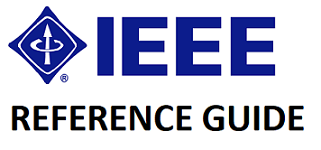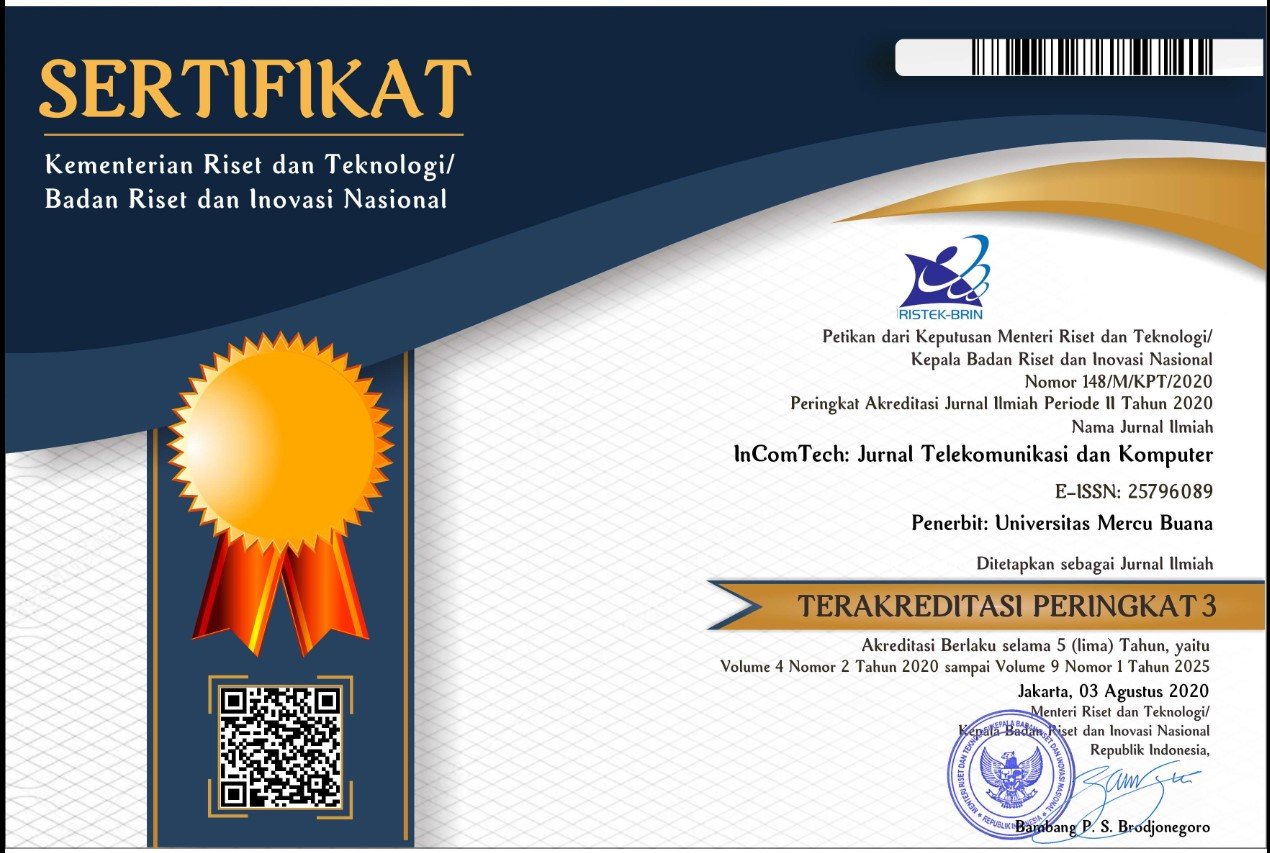Prediksi Penyakit Jantung Menggunakan Attribute Weighting k-Nearest Neighbor
Abstract
Penyakit kardiovaskular atau lebih dikenal dengan penyakit jantung menjadi salah satu penyebab kematian tertinggi di Indonesia dan di tingkat global. Selain pola hidup sehat untuk mencegah penyakit tersebut, deteksi dini terhadap resiko penyakit jantung dapat dilakukan dengan data mining atau machine learning salah satunya k-NN. k-NN adalah salah satu metode data mining paling sederhana dan kuat dalam konsistensi hasil klasifikasi, akan tetapi memiliki kekurangan yaitu memberikan bobot yang sama kepada semua atribut. Penelitian ini mengusulkan pembobotan pada atribut untuk mengatasi kelemahan tersebut. Prediksi penyakit jantung digunakan untuk menggambarkan kinerja metode usulan. Pada penelitian ini menggunakan dataset Heart Disease, sebuah dataset publik dari University of California Irvine. Dengan menggunakan nilai k 3, 5, 7, 9 diperoleh rata-rata kinerja metode usulan sebesar 79,87% lebih baik dibandingkan Chi-Square k-NN 79,08% dan k-NN klasik 65,89%. Penelitian ini menyimpulkan bahwa metode pembobotan atribut berhasil mengatasi kekurangan k-NN, jadi metode usulan cocok untuk prediksi penyakit jantung.
Keywords
Full Text:
PDFReferences
World Health Organization, “The top 10 causes of death,” 2020.
World Health Organization, “Cardiovascular diseases (CVDs),” WHO reports, no. June, CRC Press, pp. 6–7, 11-Jun-2021.
Kemenkes, “Penyakit jantung penyebab kematian terbanyak ke-2 di indonesia,” Kementrian Kesehat. Republik Indones., no. September, pp. 1–2, 2019.
V. Krishnaiah, G. Narsimha, and N. S. Chandra, “Heart Disease Prediction System Using Data Mining Technique by Fuzzy K-NN Approach,” vol. 1, no. V, pp. 371–384, 2015.
T. P. R and J. Thomas, “Human Heart Disease Prediction System using Data Mining Techniques,” Proc. IEEE Int. Conf. Circuit, Power Comput. Technol. ICCPCT 2017, 2017.
I. Mirza, A. Mahapatra, D. Rego, and K. Mascarenhas, “Human Heart Disease Prediction Using Data Mining Techniques,” in 2019 International Conference on Advances in Computing, Communication and Control (ICAC3), 2019, pp. 1–5.
I. K. A. Enriko, M. Suryanegara, and D. Gunawan, “Heart disease prediction system using k-Nearest neighbor algorithm with simplified patient’s health parameters,” J. Telecommun. Electron. Comput. Eng., vol. 8, no. 12, pp. 59–65, 2016.
A. Singh and R. Kumar, “Heart Disease Prediction using Machine Learning Algorithms,” in 2020 International Conference for Emerging Technology (INCET), 2020, pp. 1–7.
C. Raju, E. Philipsy, S. Chacko, L. P. Suresh, and D. R. S, “A Survey on Predicting Heart Disease using Data Mining Techniques,” no. March, pp. 2–3, 2018.
S. Nayak, M. K. Gourisaria, M. Pandey, and S. S. Rautaray, “Prediction of heart disease by mining frequent items and classification techniques,” 2019 Int. Conf. Intell. Comput. Control Syst. ICCS 2019, no. Iciccs, pp. 607–611, 2019.
S. Liu, P. Zhu, and S. Qin, “An improved weighted knn algorithm for imbalanced data classification,” 2018 IEEE 4th Int. Conf. Comput. Commun. ICCC 2018, pp. 1814–1819, 2018.
M. Dialameh and M. Z. Jahromi, “Proposing a General Feature Weighting Function,” Expert Syst. Appl., 2016.
N. Khateeb and M. Usman, “Efficient heart disease prediction system using K-nearest neighbor classification technique,” ACM Int. Conf. Proceeding Ser., pp. 21–26, 2017.
D. Shah, S. Patel, and S. K. Bharti, “Heart Disease Prediction using Machine Learning Techniques,” SN Comput. Sci., vol. 1, no. 6, pp. 1–6, 2020.
K. Siminski, “Fuzzy weighted C-ordered means clustering algorithm,” Fuzzy Sets Syst., vol. 1, pp. 1–33, 2017.
J. Wu, S. Pan, X. Zhu, Z. Cai, P. Zhang, and C. Zhang, “Self-adaptive attribute weighting for Naive Bayes classification,” Expert Syst. Appl., vol. 42, no. 3, pp. 1487–1502, 2015.
V. Kotu and B. Deshpande, Predictive Analytics using Rapidminer. Elsevier, 2015.
I. Witten, E. Frank, and M. Hall, Data Mining Practical Machine Learning Tools and Techniques Third Edition, vol. 277. Elsevier Inc., 2011.
A. B. Hassanat, M. A. Abbadi, and A. A. Alhasanat, “Solving the Problem of the K Parameter in the KNN Classifier Using an Ensemble Learning Approach,” Int. J. Comput. Sci. Inf. Secur., vol. 12, no. 8, pp. 33–39, 2014.
DOI: http://dx.doi.org/10.22441/incomtech.v13i2.17883

This work is licensed under a Creative Commons Attribution-NonCommercial 4.0 International License.
Publisher Address:
Magister Teknik Elektro, Universitas Mercu Buana
Jl. Meruya Selatan 1, Jakarta 11650
Phone (021) 31935454/ 31934474
Fax (021) 31934474
Email: [email protected]
Website of Master Program in Electrical Engineering
http://mte.pasca.mercubuana.ac.id
pISSN: 2085-4811
eISSN: 2579-6089
Jurnal URL: http://publikasi.mercubuana.ac.id/index.php/Incomtech
Jurnal DOI: 10.22441/incomtech

Ciptaan disebarluaskan di bawah Lisensi Creative Commons Atribusi-NonKomersial 4.0 Internasional
The Journal is Indexed and Journal List Title by:













